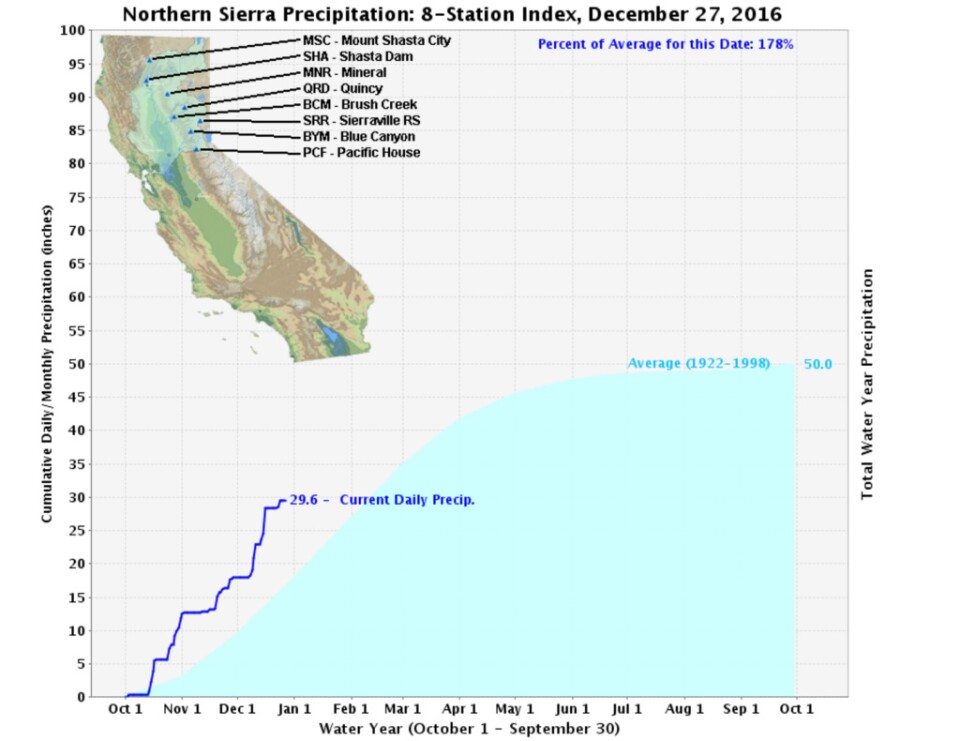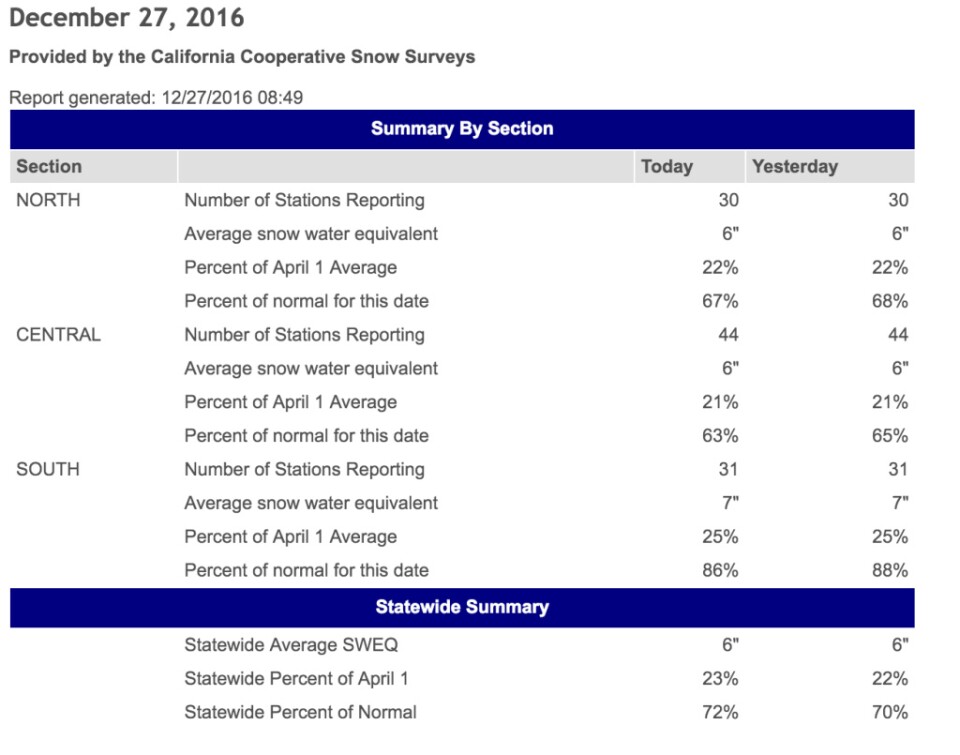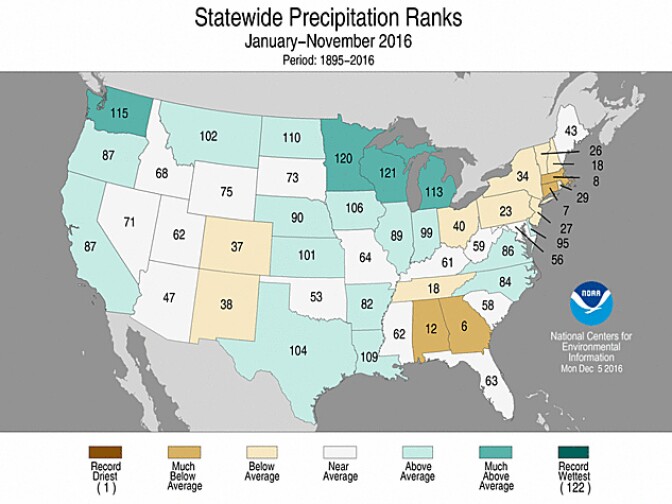With our free press under threat and federal funding for public media gone, your support matters more than ever. Help keep the LAist newsroom strong, become a monthly member or increase your support today.
Hot, dry, not enough snow: Southern California's weather in 2016 in 5 charts
It was hot, but not record-breaking. It was dry, but it could have been drier. Northern California got more rain than the Southland. Here, we present 2016's weather in five charts.
1. It was warmer, but it wasn't the hottest year.
2016 is shaping up to be the third warmest in Southern California history, according to the National Oceanic and Atmospheric Administration. Temperatures were 3˚F above normal.

2. It was also abnormally dry.
Even though Los Angeles has received more than twice as much rainfall in December as normal, all of Southern California is still in extreme or exceptional drought.

3. Statewide, the precipitation picture is much rosier.
California, as a whole, has gotten above average rain and snowfall so far in 2016.

4. Especially in the places where we get our water.
If you hone in on the Northern and Central Sierra Nevada, where a third of Southern California's water comes from, things look even better. There, precipitation is well above normal for this time of year: 178 and 145 percent of normal, respectively.

5. But the water is rain, not snow – and that's important.
The bad news is: even though precipitation is well above normal in the mountains, a lot of that has been falling as rain because it has been so warm. So even though precipitation is 178 percent of normal in the Northern Sierra, snowpack there is at just 67 percent.

That's bad because the Sierra Nevada snowpack is California's most important source of water. The snow melts throughout the spring and summer and fills reservoirs like Lake Oroville and Lake Shasta. When it rains in the winter, all the water runs off now, and isn't saved for the dry season.













